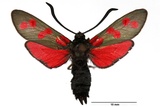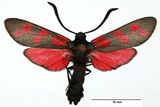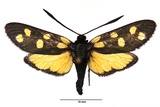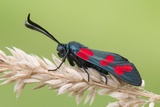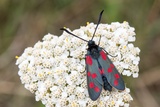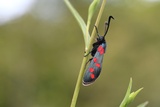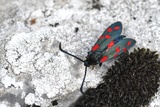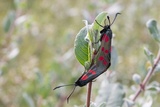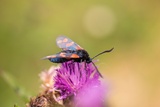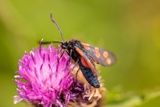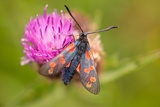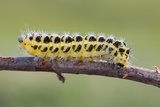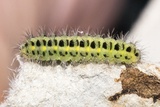Zygaena filipendulae (Linnaeus, 1758) Species
Last modified: Nov. 21, 2025, 5:37 p.m.
A very common species throughout Belgium. The most common member of this genus in our country.
This species is considered Least Concern according to the IUCN Red List category for Flanders 2023.
Details
- Classification
- Family: Zygaenidae > Subfamily: Zygaeninae > Genus: Zygaena > Subgenus: Zygaena > Species: Zygaena filipendulae
- Vernacular names
- Sint-jansvlinder (NL), Six spot Burnet (EN), la Zygène de la filipendule (FR), Sechsfleck-Widderchen (DE)
- First mention in Belgium
- De Sélys-Longchamps E. 1837. Catalogue des Lépidoptères ou Papillons de la Belgique, précédé du tableau des Libellulines de ce pays. — — : 1–29. On page 23 (as Zygoena (sic) Filipendulae). view page
- Status
-
Native
Distribution
Caterpillar
Up to 22mm. Plump and stocky body with abruptly truncated end, greenish yellow with a double row of black spots on the back, on either side of these black spots a row of yellow spots, also a row of black spots on either side of the body, which may be absent in pale specimens. In some forms the black spots are so enlarged that the caterpillars are practically completely black. Head retracted into the body.
Bionomics
The larva lives free on the leaves and hibernates once or twice and pupates in a papery cocoon attached to a grass stem. The adults fly on hot, sunny days and are attracted to a wide variety of flowers such as Centaurie and Scabiosa.
Flight periods
The adults fly from late May till late August. If weather conditions are good, the moths can be seen till late September, occasionally later.
Observed on
- Host plant (species):
- Lotus corniculatus and Lotus uliginosus
- Host plant (genera):
- Lotus and Dorycnium
The larva lives on Fabaceae like Lotus corniculatus and L. uliginosus, Onobrychis, Lathyrus, Dorycnium, Astralagus etc...
Habitat
It inhabits meadows, forest clearings, calcareous grasslands and areas rich in grasses and flowers.
